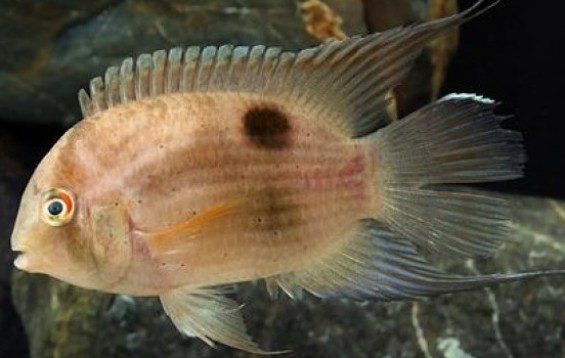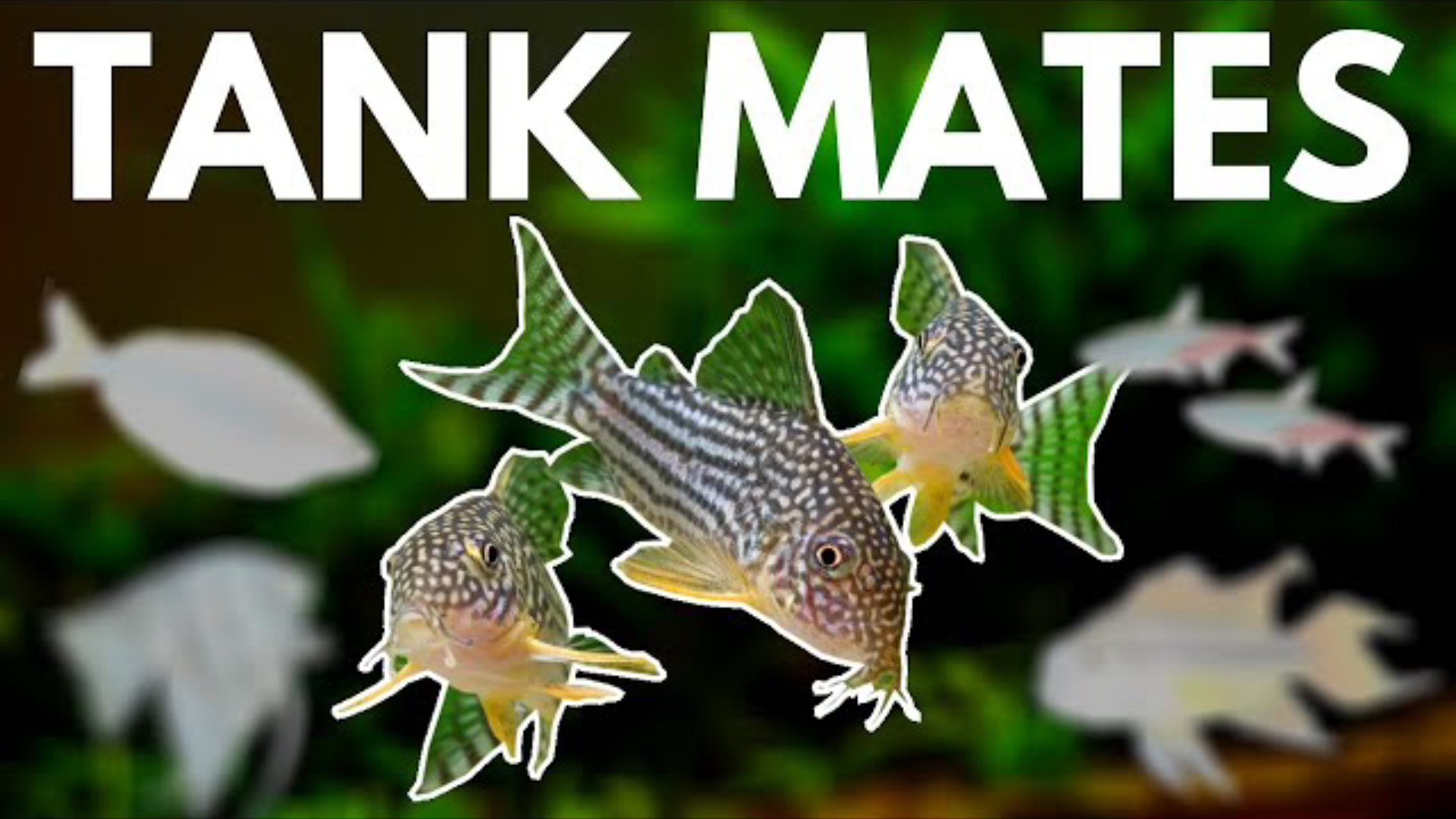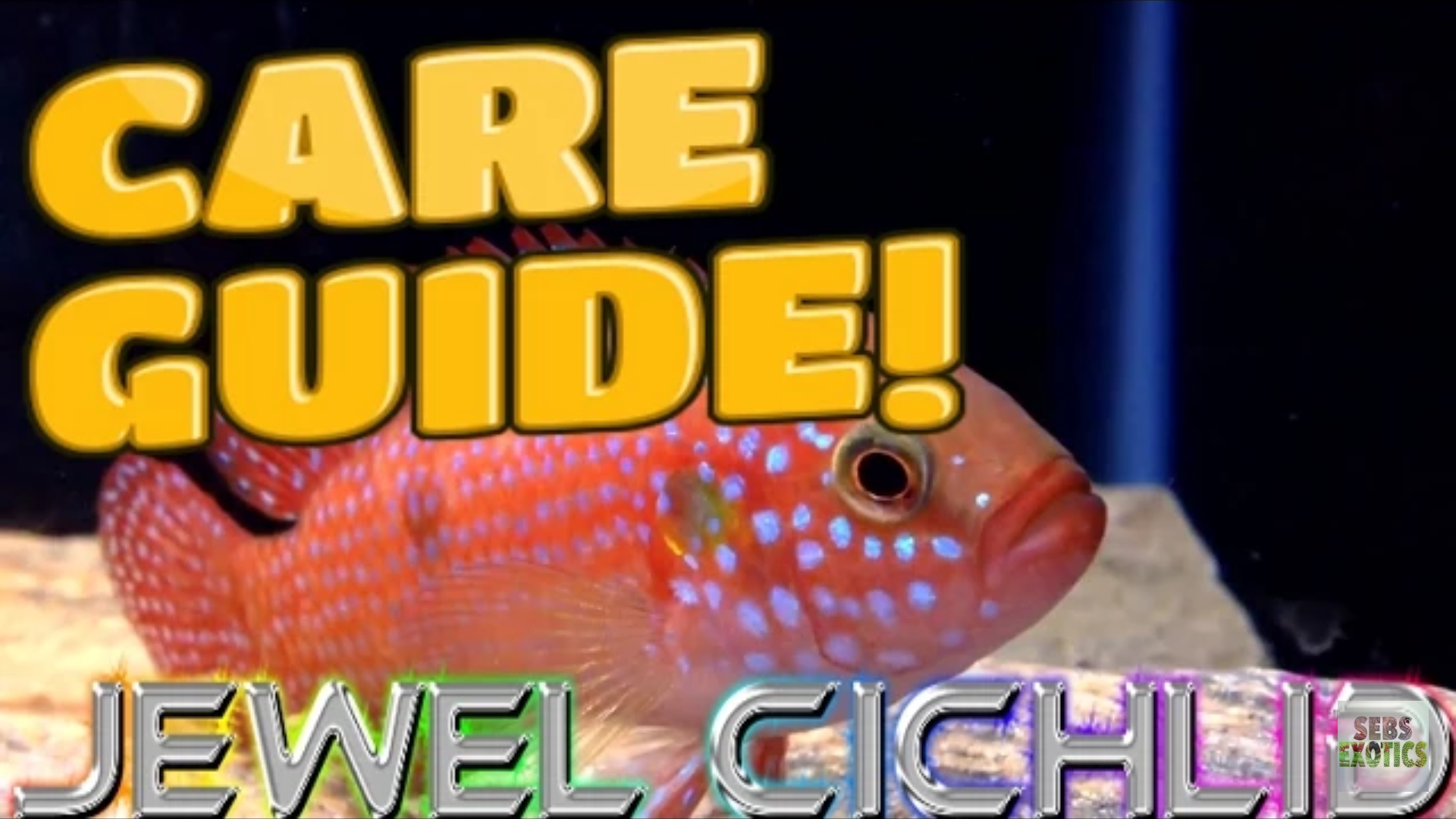- Name:
Keyhole Cichlid
- Family: Cichlidae
- Species: New World Cichlids
- Scientific Name: Cleithracara maronii


General info about Keyhole Cichlid
These fish have a creamy coloration with a dark tint that looks like a keyhole in their rear half. These fish can reach up to 4 inches. To keep these fish, water temperature should range from 75°F to 78°F and water pH between 6.8 and 8.0. The tank should have a sandy substrate, plants and caves. They are peaceful and can be kept in community aquariums with other peaceful species. They should be kept in groups of 6 or 8.
Keyhole Cichlid Diet & Nutrition
This species is omnivorous. In the wild it feeds on worms, crustaceans and insects. In captivity it should be fed with dried foods supplemented with live or frozen food.
Determining Sex of Keyhole Cichlid
Males are larger than females.
Breeding & Spawning Keyhole Cichlid
To breed these fish in captivity, it is best to get a group of 6 and let it pair off naturally. Once a pair is formed, the other fish should be removed since they become quite aggressive when breeding. The female will lay her eggs on a flat surface and the male will then fertilize them. Both parents will guard and tend to the eggs. The eggs take 3 to 5 days to hatch and become free-swimming after a few days.
Keyhole Cichlid Origin
These fish are native to Guyana, Suriname, Venezuela and Trinidad. They inhabit still or slow-moving waters.
Acclimating Keyhole Cichlid
The water in which these fish are packaged is different from the water in the tank, since these fish are extremely sensitive to water conditions the acclimation process is very important. This process should never be rushed. Aquarium lights should be off for at least the first 4 hours of the fish in the new tank and it should not be fed in the first 24h. There are two acclimation methods: Floating Method and the Drip Method.
Floating method - the aquarium lights should be off and lights in the room should be dim, the bag in which the fish is should be placed in the surface of the water to float for about 15 minutes, this allows the water in the bag to adjust to the water in the tank. The bag should then be cut under the knot and the top edge of the bag should be rolled down one inch, then ¼ cup of the aquarium water should be added to the bag, this step should be repeated every 4 minutes until the bag is full, then half the water of the bag should be discarded and the bag should be put to float again and ¼ cup of the aquarium water should be added to the bag every 4 minutes until the bag is full. Afterwards, the Discus can be moved into the aquarium.
Drip method – the aquarium lights should be off and lights in the room should be dim, the bag in which the fish is should be placed in the surface of the water to float for about 15 minutes, this allows the water in the bag to adjust to the water in the tank. The bag contents should be poured into a 1 gallon bucket that has never been cleaned with any chemicals, the fish should be enterally submerged. A siphon, using airline tubing, should be set up and a drip line should run from the main aquarium to the bucket. Several loose knots should be tied in the airline tubing to regulate flow. Sucking the end of the airline tube that goes to the bucket will begin a siphon, the flow should be regulated to 2 to 4 drips per second. Once the water in the buckets doubles, half should be discarded and the process should be repeated until it doubles again. Afterwards, the fish can be moved to the aquarium.
Original Detail
| Name | Species | Family | Scientific Name | More Detail | Added by |
|---|---|---|---|---|---|
| Keyhole Cichlid | New World Cichlids | Cichlidae | Cleithracara maronii | These fish have a creamy coloration with a dark tint that looks like a keyhole in their rear half. These fish can reach up to 4 inches. To keep these fish, water temperature should range from 75°F to 78°F and water pH between 6.8 and 8.0. The tank should have a sandy substrate, plants and caves. They are peaceful and can be kept in community aquariums with other peaceful species. They should be kept in groups of 6 or 8. |
PalaciosAn |
Changed by users
| Submitted Date | Submitted By | Status | Action |
|---|





